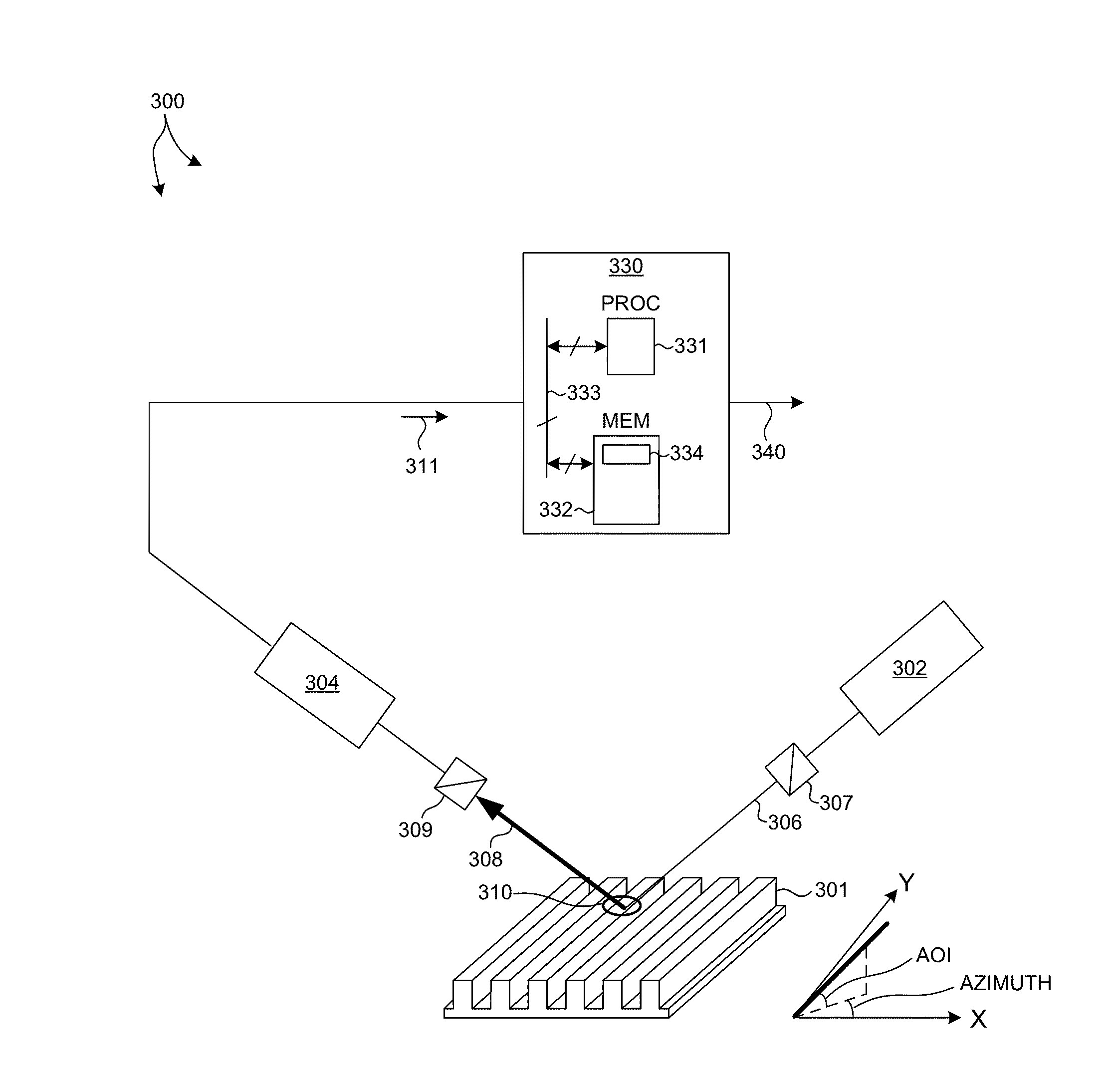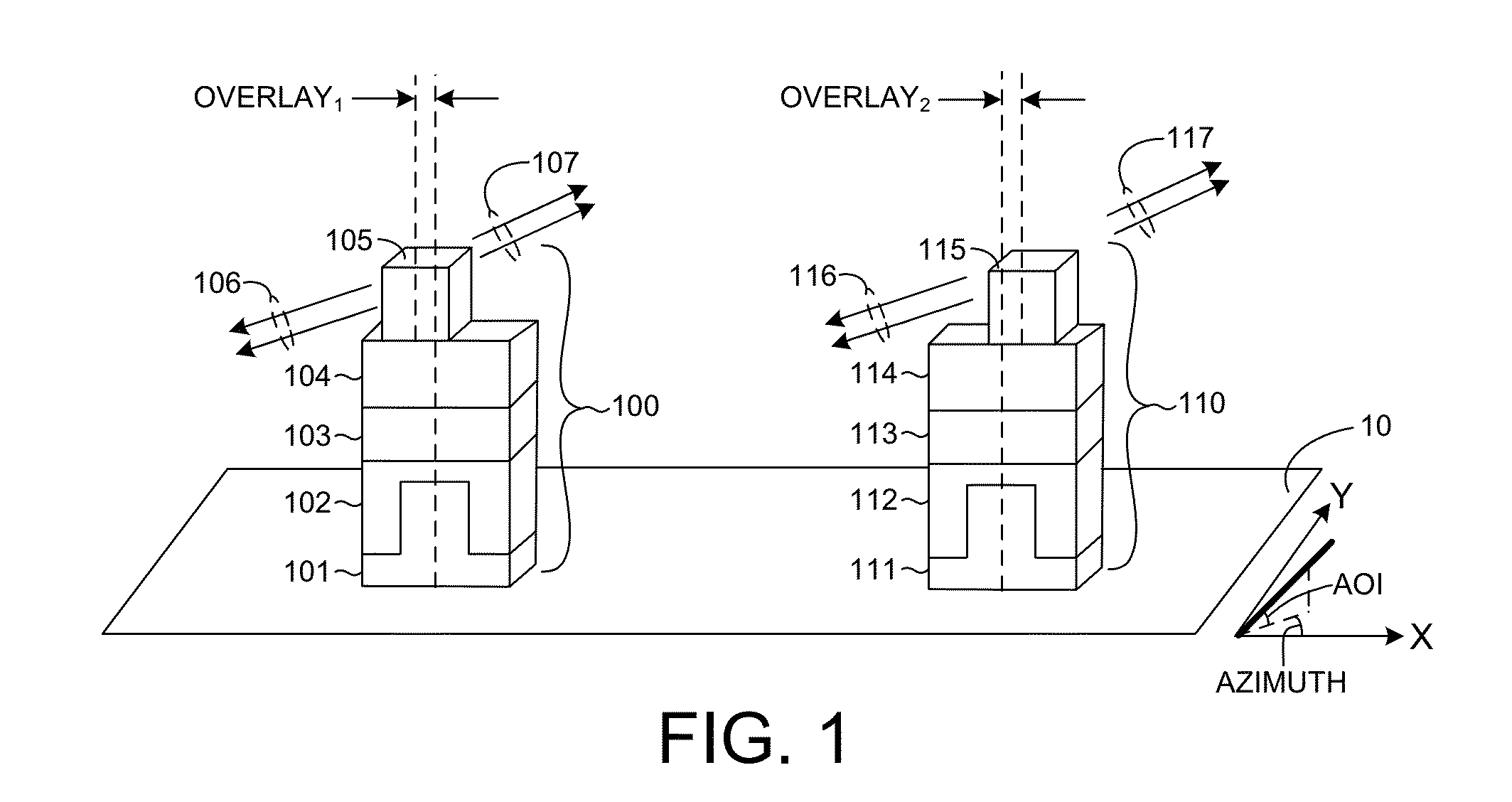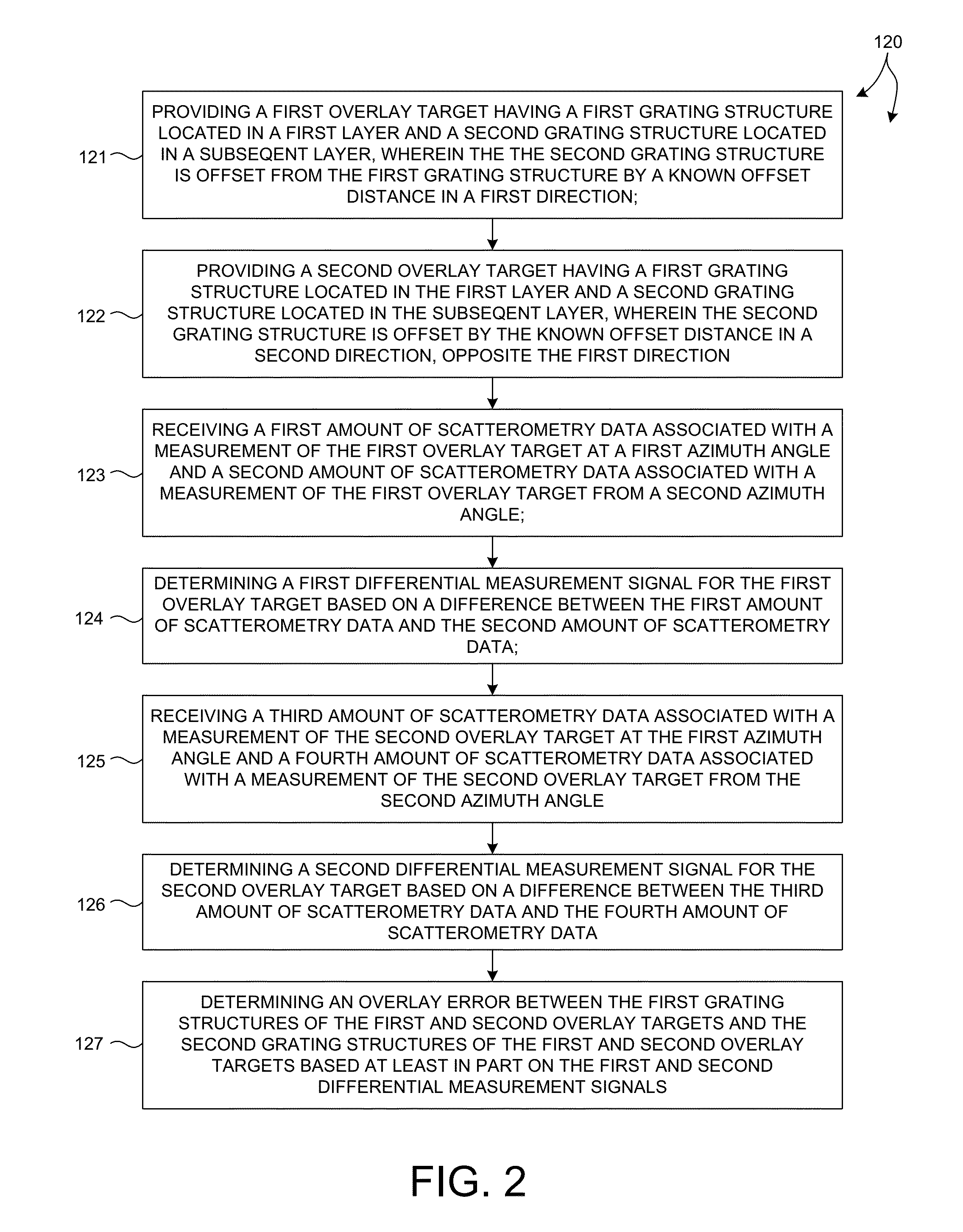Signal Response Metrology For Image Based And Scatterometry Overlay Measurements
- Summary
- Abstract
- Description
- Claims
- Application Information
AI Technical Summary
Benefits of technology
Problems solved by technology
Method used
Image
Examples
Embodiment Construction
[0062]Reference will now be made in detail to background examples and some embodiments of the invention, examples of which are illustrated in the accompanying drawings.
[0063]Methods and systems for measuring overlay error between structures formed on a substrate by successive lithographic processes are presented herein. Overlay error is measured based on zero order scatterometry signals. In one aspect, only two overlay targets are employed to perform an overlay measurement. Scatterometry data is collected from each target at two different azimuth angles to produce symmetric signals. The symmetric signals are used to determine overlay error.
[0064]FIG. 1 depicts overlay targets 100 and 110 disposed on a specimen 10 under measurement. Overlay target 100 includes two grating structures 101 and 105 offset from one another by an overlay distance, OVERLAY1. In the embodiment depicted in FIG. 1, grating structure 105 is disposed on a top layer (i.e., exposed) and grating structure 101 is di...
PUM
 Login to View More
Login to View More Abstract
Description
Claims
Application Information
 Login to View More
Login to View More - R&D
- Intellectual Property
- Life Sciences
- Materials
- Tech Scout
- Unparalleled Data Quality
- Higher Quality Content
- 60% Fewer Hallucinations
Browse by: Latest US Patents, China's latest patents, Technical Efficacy Thesaurus, Application Domain, Technology Topic, Popular Technical Reports.
© 2025 PatSnap. All rights reserved.Legal|Privacy policy|Modern Slavery Act Transparency Statement|Sitemap|About US| Contact US: help@patsnap.com



